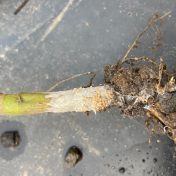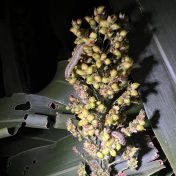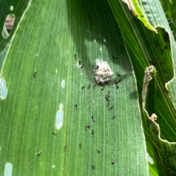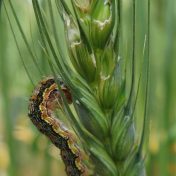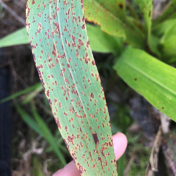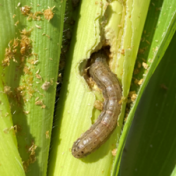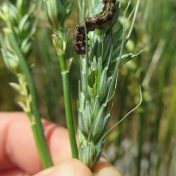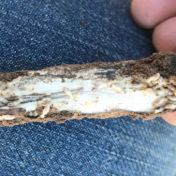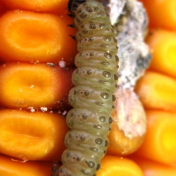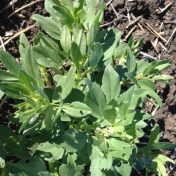Warm, wet conditions have led to isolated outbreaks of the fungal pathogen, Sclerotium rolfsii, in sorghum and grain legume crops across southern Queensland (although other regions are also at risk) and several disease outbreaks in mungbean crops growing throughout Queensland and northern New South Wales. Sclerotium rolfsii Sclerotium is a soilborne pathogen that can infect a wide range of plant… Read more »
Maize and sorghum crops across Queensland are experiencing extreme fall armyworm (FAW) pressure. In Central Queensland in particular, sorghum planted in the typical planting window has been heavily impacted by the very high FAW pressure. Persistent, high-density infestations pose a risk to crops from emergence through to grain fill. In an unwelcome development not observed in previous seasons, large FAW… Read more »
Late sorghum is susceptible to FAW damage, and potential yield loss, in the vegetative stage. This article discusses how the yield loss happens and how to determine if your crop is at risk. The information below was generated from both sorghum trials being undertaken at the Gatton research station funded by the Queensland Government and GRDC in collaboration with QAAFI… Read more »
Many regions in Qld and northern NSW are still experiencing an outbreak of Helicoverpa armigera in wheat. Before the last significant outbreak occurred in 2016, it had been many years since anyone had seen such an event, and while there was a smaller outbreak in 2020, it was not on the scale or severity of this year. In many crops… Read more »
Disease surveys across northern New South Wales and southern Queensland have found that many sorghum crops have been impacted by rust. Sorghum rust is caused by the fungal pathogen, Puccinia purpurea, and is considered to be a relatively minor disease of sorghum in Australia. Symptoms Rust can infect sorghum crops at all stages of growth. Initial symptoms appear as small… Read more »
Fall armyworm (FAW) are still active across the Northern Grains Region, but inland Central and Southern Queensland have not experienced continuous population build up in crops since the first immigration of moths in September–October. One of the major contributors to this continuing low pressure is probably the very high natural enemy (beneficial) impact on FAW. A number of very common… Read more »
Helicoverpa outbreaks in wheat are relatively rare events. The last big outbreak, in 2016, was the first significant event for several decades, so treating helicoverpa in wheat is not something that many agronomists are familiar with. However, 2020 looks to be a year when helicoverpa infestations in some crops may warrant control. Wet winters are well correlated with outbreaks of… Read more »
Termites are common in undisturbed parts of the landscape, playing an important role in the ecosystem. It is unusual to find them in crops—but in 2020, there have been several reports of termites in winter cereals. The first reports were received during crop establishment, and more were received once the crops started to come out in head and set grain…. Read more »
Recent reports were received of decidedly non-armyworm looking caterpillars attacking corn cobs in a crop near Mundubbera. The larvae in question were pale with lines of large dark spots on their back, and looked very similar to a serious mungbean pest, beanpodborer (Maruca vitrata). However, the larvae in question were slightly larger (about 20 mm) and some had a slight… Read more »
While drought has dashed the planned rotations of many growers, there is still a risk of pest outbreaks at this time of year. Below are some of the most common to keep an eye out for. A note on withholding periods following insecticide use in crops that are diverted to stock If insecticide treatments have been applied to crops which… Read more »
